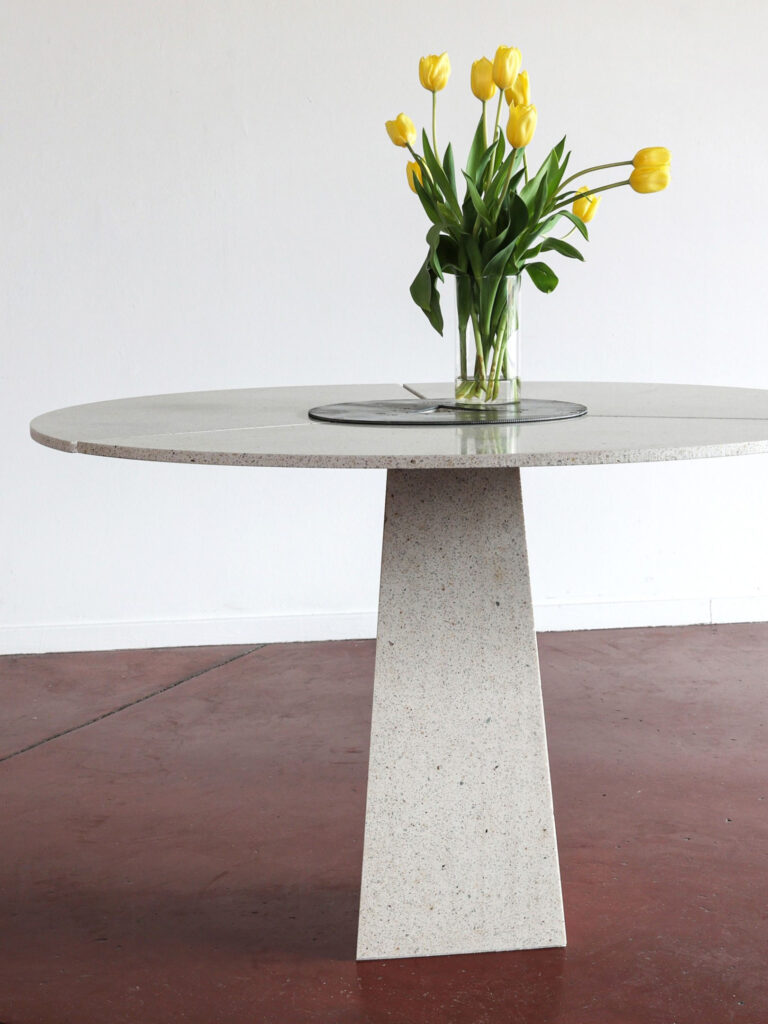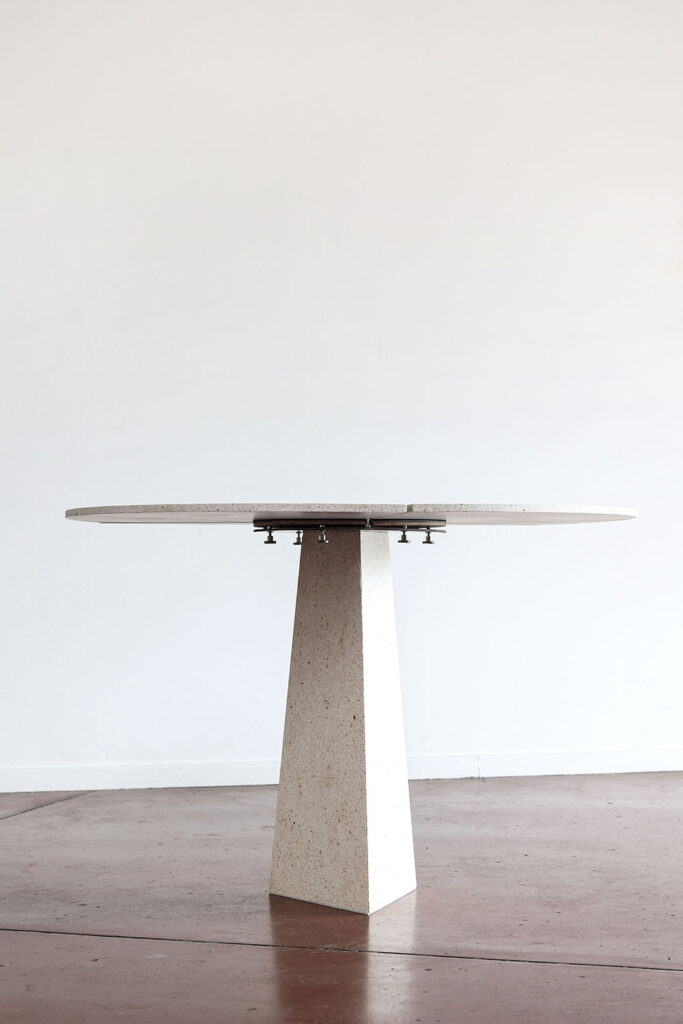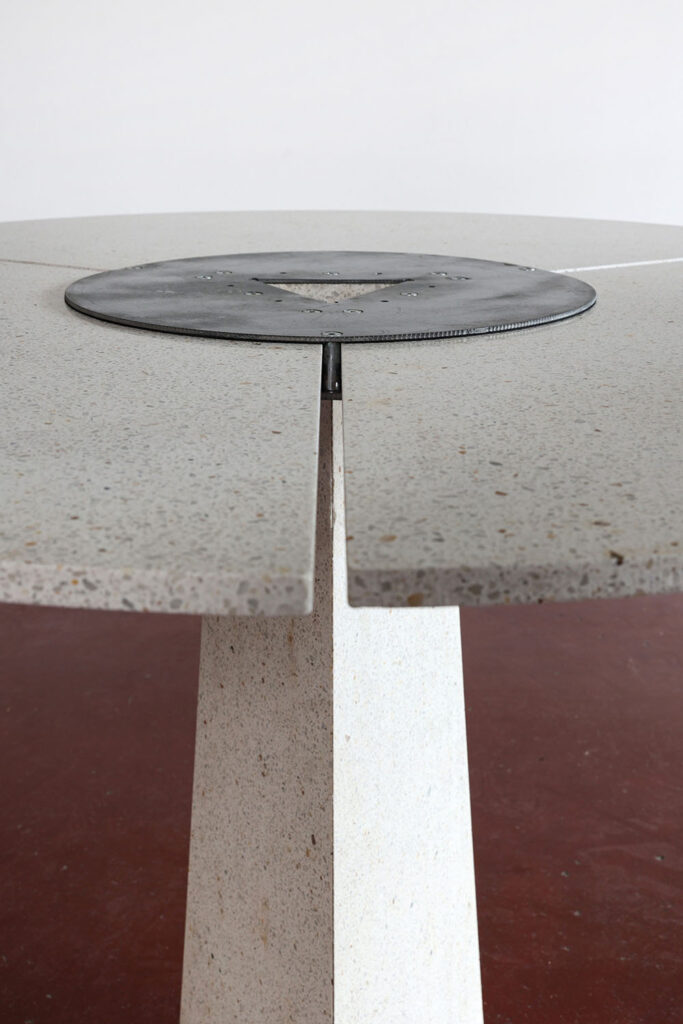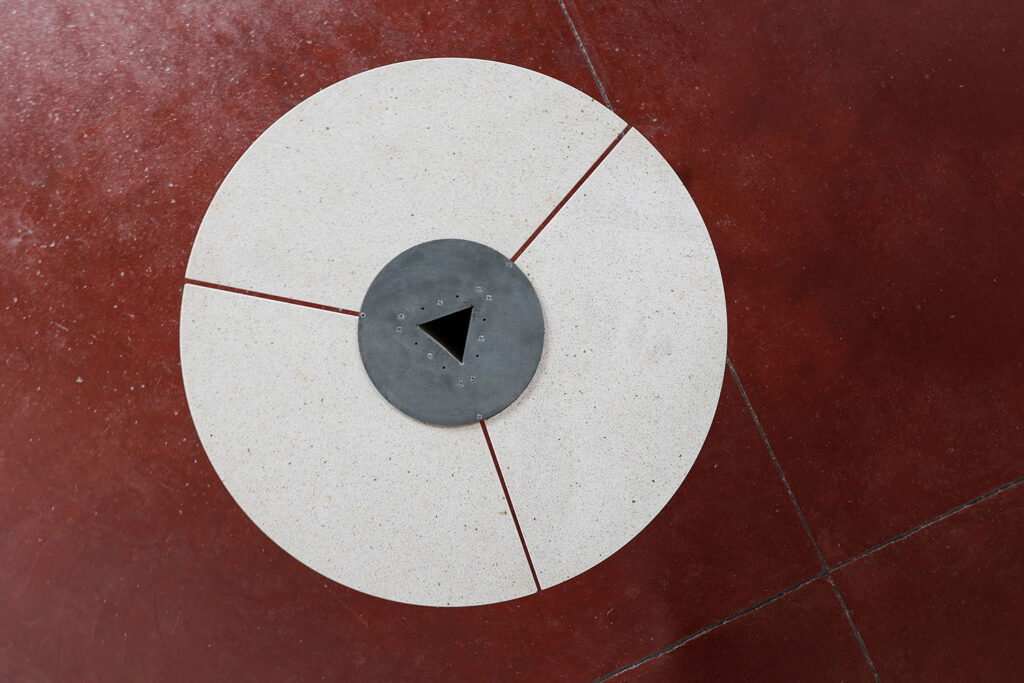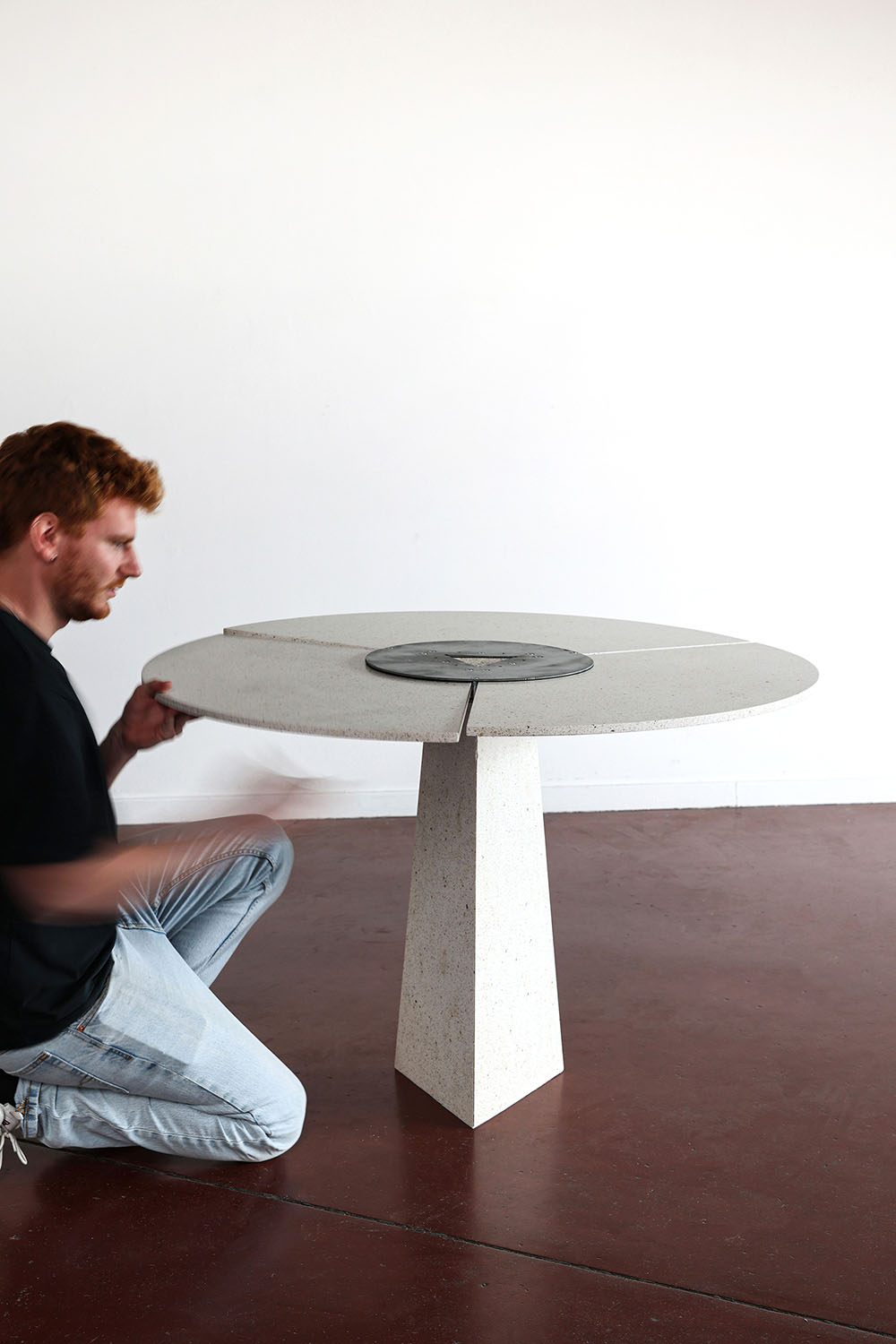
GRAVITY
From Stonehenge in Wiltshire (UK), the Props series by artist Richard Serra, to the Tripi by Lucas Desmet.
The design concept is linked to the tipi (teepee), the three pieces and the verb ‘to trip’. The easy way also turns out to be the eco way: ecologically responsible and economically feasible. It sounds mysterious, and is truly fascinating.
The stonemasons believed it was totally impossible. But Lucas Desmet proves that it can be done. The column leg is in the form of a tetrahedron (triangular pyramid). The three (mitred) stone side panels ‘seamlessly’ abut one another. There is no mounting material; here gravity is at work. It’s entirely natural, just like at Stonehenge and Serra. The tabletop also consists of three stone sections, with a 1 cm-gap between them. A connector holds everything together. No tools required; you simply turn it by hand to tighten – or release. That is the idea. Just like the tipi tent, the Tripi table is easy to (dis)assemble. Albeit with the help of an extra pair of hands. It is precision work: you want to prevent it from ‘tripping over’. The concept is based on flat-pack principles: the components are flat-packed in a box measuring 100 x 50 x 20 cm. The six stone components weigh a maximum of 10 kilos per item, making them easy to lift and handle. So that’s the story behind the name.
The design story tells us more. It began with Lucas’ apartment: renovation means insulation, so a new window – and the removal of the marble windowsills. ‘It was a great pity for such a wonderful natural product to go to waste! You can’t just throw that away.’ This tough confrontation led to a passion for natural stone, natural processes and forces, and the recovery of (centuries-old) materials. Lucas was constantly hearing about personal experiences with marble tables. And it was especially the stories about the negatives that got him thinking. ‘Impossible to lift. Once and for all. Static. Shockingly expensive. Irreparable.’ That’s why the Tripi is modular, demountable, liftable and repairable. You can resolve damage by replacing that one building block. (It’s sure to be possible to reuse the damaged component for something else.) And the Tripi is restored to its full glory. Do you want to change the variety of stone? No problem.
The final part of the story is about the easy way: using what is within reach. Reused materials are better for the environment and your wallet. The Tripi reuses 1.5 cm-thick terrazzo façade panels. So you see, it’s simplicity itself to marry ecological motives with economic ones.
The epilogue lays out the next steps. Lucas is thinking about different modules, and dreaming up flexible table designs. Durability is also about being life-course resistant. Wait & see.
